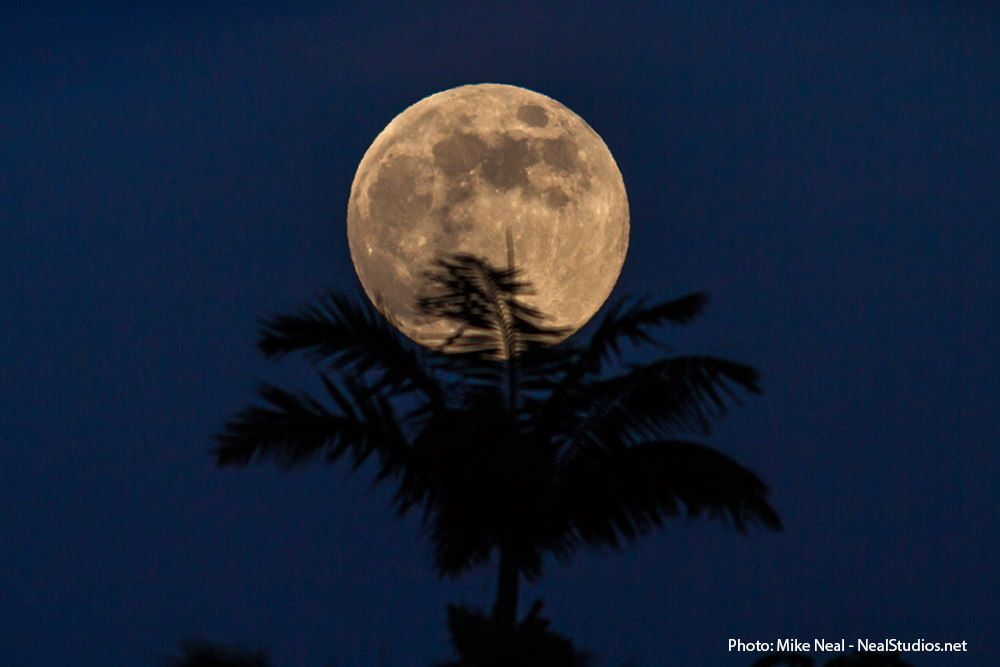
Alien planets without big, climate-stabilizing moons like the one that orbits Earth may still be capable of supporting life, a new study reports.
Previous modeling work had suggested that Earth's axial tilt, or obliquity, would vary wildly over long time spans without the moon's steadying gravitational influence, creating huge climate swings that would make it tough for life to get a foothold on our planet.
But that's not necessarily the case, said Jack Lissauer of NASA's Ames Research Center in Moffett Field, Calif. [The Moon: 10 Surprising Facts]
"If the Earth did not have a moon, its obliquity — and, therefore, its climate — would vary, indeed, substantially more than it does at present," Lissauer said during a presentation in December at the American Geophysical Union's annual fall meeting in San Francisco. "But it's nowhere near as bad as was predicted based on previous models."
An abnormally large moon
Most researchers think the moon formed from material blasted into space when a mysterious planet-size body slammed into Earth nearly 4.5 billion years ago.
The moon is 27 percent as wide as Earth and 1 percent as massive, making it a celestial oddball. No other non-dwarf planet in the solar system harbors a moon so large relative to itself, and such enormous satellites appear to be rare farther afield as well, Lissauer said.
Sign up for the Live Science daily newsletter now
Get the world’s most fascinating discoveries delivered straight to your inbox.
"If giant moons were common around exoplanets, then Kepler would've found one by now," he said, referring to NASA's planet-hunting Kepler space telescope.
The moon's strong gravitational pull has kept Earth in line, limiting the planet's axial tilt to between 22 degrees and 24.6 degrees from the vertical over time, Lissauer said. This has minimized dramatic climate swings, perhaps making Earth a more suitable place for life to evolve and thrive.
In fact, some researchers think a moonless Earth would likely be lifeless, basing this conclusion on modeling work suggesting that the planet's axial tilt in such a case would vary from 0 degrees all the way up to 85 degrees.
With a 0-degree tilt, the sun would always be overhead at the equator, and the poles would receive virtually no light. An 85-degree obliquity would flip the planet over so that the poles faced the sun alternately, resulting in nearly six months of sunshine for the Northern Hemisphere during summer and almost six months of darkness during winter.
Flipping from 0 to 85 degrees "would really throw the climate into total chaos, even on a planet that was mostly oceans and some islands, small continents, that would have, one would think, a more equitable climate because of the buffering influence of greater water cover," Lissauer said.
Does life need a moon?
Lissauer and his colleagues devised their own model, then ran numerous computer simulations to investigate how a moonless Earth's axial tilt would vary over long time spans — up to 4 billion years.
They found greater obliquity shifts than Earth experiences with its abnormally large moon (which helps stabilize the planet against the various gravitational tugs of other solar system bodies). But these variations were nowhere near as dramatic as those predicted by previous work.
During 100-million-year simulation runs, for example, Earth's tilt never got up to 40 degrees or down to 10 degrees, Lissauer said.
"For timescales that are relevant to advanced life, it changes by maybe plus or minus 10 degrees — a lot bigger than we have with our moon, but a lot smaller and a lot fewer climate effects [than predicted by previous models]," he said. "The characteristic behavior is very well-behaved, in most cases."
The obliquity shifts, he added, would be even less pronounced if Earth had retrograde rotation — that is, if our planet spun around its axis in the direction opposite that in which it's traveling around the sun. (In this case, the sun would rise in the west and set in the east.)
The results of the group's simulations have applications beyond playing what-if games with Earth and its climate history, Lissauer said. Rather, they could help inform and shape the ongoing search for exoplanets capable of hosting life as we know it.
"We're not talking about, really, the Earth without the moon as a realistic model for the Earth, unless somebody goes out there and destroys the moon," he said. "We're using this as the first case of studying a plausible exoplanet, and we're going to use some future calculations — we're going to do the same thing with other systems."
The first targets of future study will be theoretical systems whose characteristics will likely be inspired by real planets discovered by Kepler, Lissauer added.
Follow Mike Wall on Twitter @michaeldwall and Google+. Follow us @Spacedotcom, Facebook or Google+. Originally published on SPACE.com.













